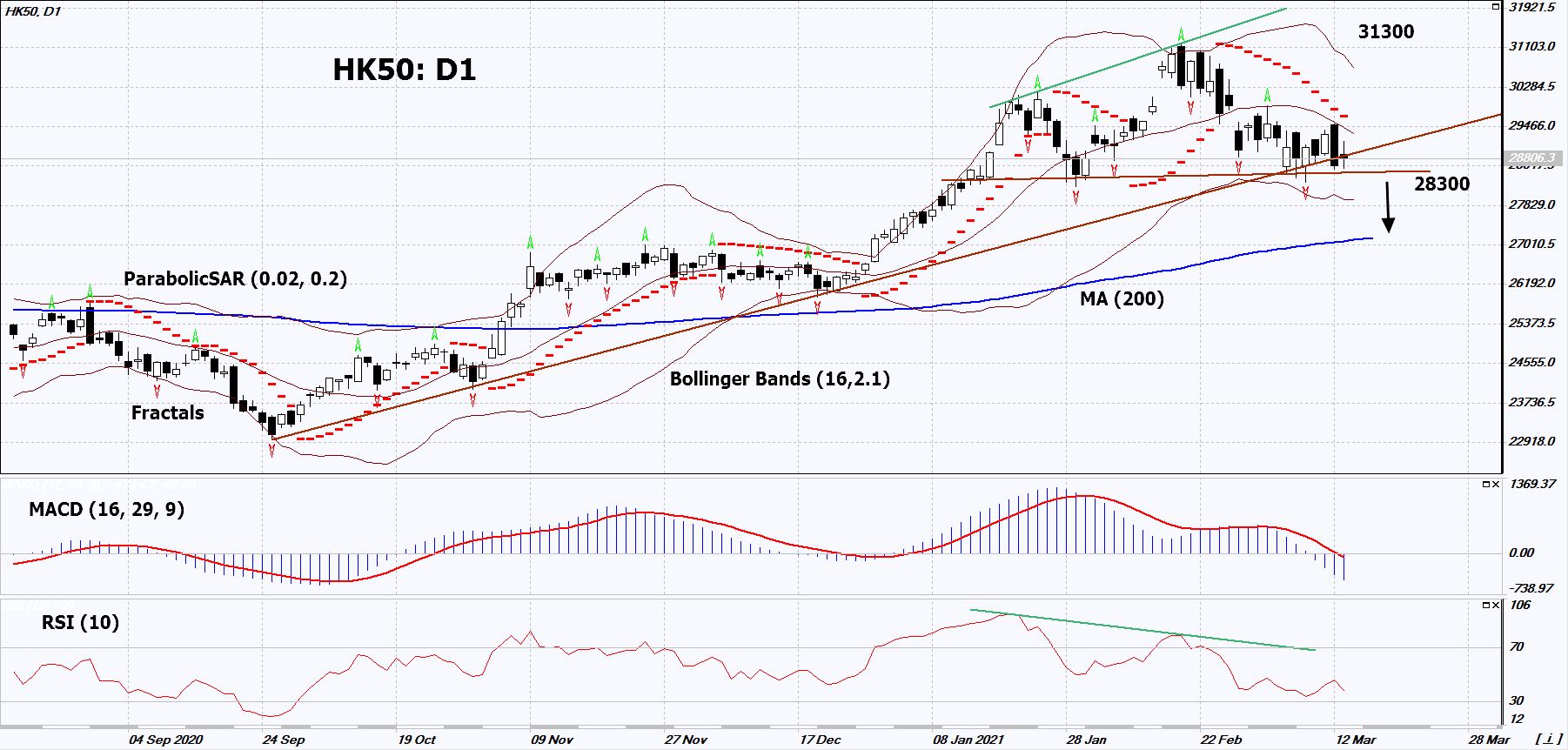Recommendation for Hang Seng Index:Sell
Sell Stop : Below 28300
Stop Loss : Above 31300
RSI : Sell
MACD : Sell
MA(200) : Neutral
Fractals : Neutral
Parabolic SAR : Sell
Bollinger Bands : Neutral
Chart Analysis
On the daily timeframe, HK50: D1 broke down the uptrend support line. The index has formed a “Head and Shoulders” chart pattern. Before opening a position, the quotes should break down the “neck” line of this pattern. A number of technical analysis indicators formed signals for a further drop. We do not exclude a bearish move if HK50: D1 falls below the last lower fractal: 28300. This level can be used as an entry point. We can place a stop loss above the maximum since June 2018, the last two upper fractals, the upper Bollinger line and the Parabolic signal: 31300. After opening a pending order, move can the stop loss following the Bollinger and Parabolic signals to the next fractal maximum. Thus, we change the potential profit/loss ratio in our favor. After the transaction, the most risk-averse traders can switch to the four-hour chart and set a stop loss, moving it in the direction of the bias. If the price meets the stop loss (31300) without activating the order (28300), it is recommended to delete the order: the market sustains internal changes that have not been taken into account.
Fundamental Analysis
The United States sanctioned three more Chinese companies. Will the HK50 quotes drop? The US Federal Communications Commission (FCC) included 3 more Chinese firms in the list of companies posing a threat to national security. There are now five of them: Huawei Technologies, ZTE Corp, Hytera Communications Corp, Dahua Technology and Hangzhou Hikvision Digital Technology. The FCC banned American companies from buying their equipment and services, as well as supplying them with components. In addition, American mobile operators will have to dismantle and replace the already installed equipment of these Chinese companies. The aggravation of US-China relations may negatively affect the stock prices of Chinese companies. Note that Hong Kong’s GDP contracted in Q4 2020 by -3% yoy, and industrial production by -6%.
